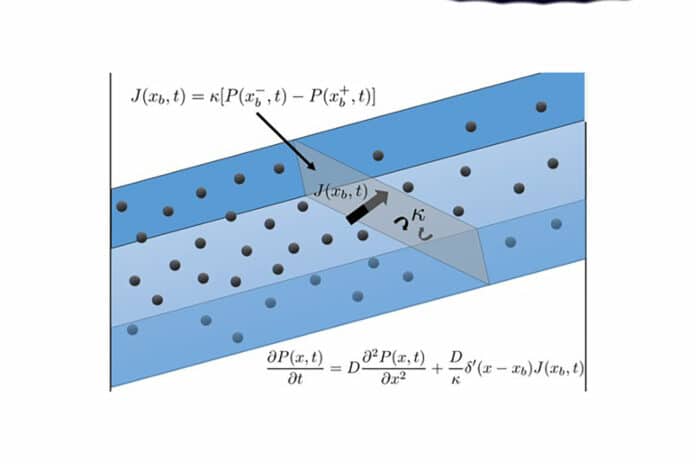Scientists have had to rely on approximations or limited viewpoints up until now to analyze particle motion through porous materials like biological tissues, polymers, different minerals, and sponges. A new study has now offered a novel technique presenting exciting opportunities in diverse settings.
Scientists at the University of Bristol have discovered a novel mathematical formula indicating that the diffusive movement through permeable material can be modeled precisely for the first time. The equation comes a century after the first diffusion equation, derived by two of the world’s top physicists, Albert Einstein and Marian von Smoluchowski. It represents a significant advancement in representing motion for various entities, including microscopic particles, living organisms, and man-made devices.
Lead author Toby Kay, completing a Ph.D. in Engineering Mathematics, said: “This marks a fundamental step forward since Einstein and Smoluchowski’s studies on diffusion and revolutionizes the modeling of diffusing entities through complex media of all scales, from cellular components and geological compounds to environmental habitats.
“Previously, mathematical attempts to represent movement through environments scattered with objects that hinder motion, known as permeable barriers, have been limited. By solving this problem, we are paving the way for exciting advances in many different sectors because permeable barriers are routinely encountered by animals, cellular organisms, and humans.”
To find the new equation, scientists had to represent random motion microscopically. They then subsequently zoom out to describe the process macroscopically.
According to scientists, further research is necessary to apply this mathematical tool to experimental applications.
They noted, “For example, being able to model the diffusion of water molecules accurately through biological tissue will advance the interpretation of diffusion-weighted MRI (Magnetic Resonance Imaging) readings. It could also offer a more accurate representation of air spreading through food packaging materials, helping to determine shelf life and contamination risk. In addition, quantifying the behavior of foraging animals interacting with macroscopic barriers, such as fences and roads, could provide better predictions on the consequence of climate change for conservation purposes.”
Senior author Dr. Luca Giuggioli, Associate Professor in Complexity Sciences at the University of Bristol, said: “This new fundamental equation is another example of the importance of constructing tools and techniques to represent diffusion when space is heterogeneous, that is, when the underlying environment changes from location to location.”
“This latest discovery is a further significant step in improving our understanding of motion in all its shapes and forms – collectively termed the mathematics of movement – which has many exciting potential applications.”
Journal Reference:
- Toby Kay and Luca Giuggioli. Diffusion through permeable interfaces: Fundamental equations and their application to first-passage and local time statistics. Physical Review Research.
